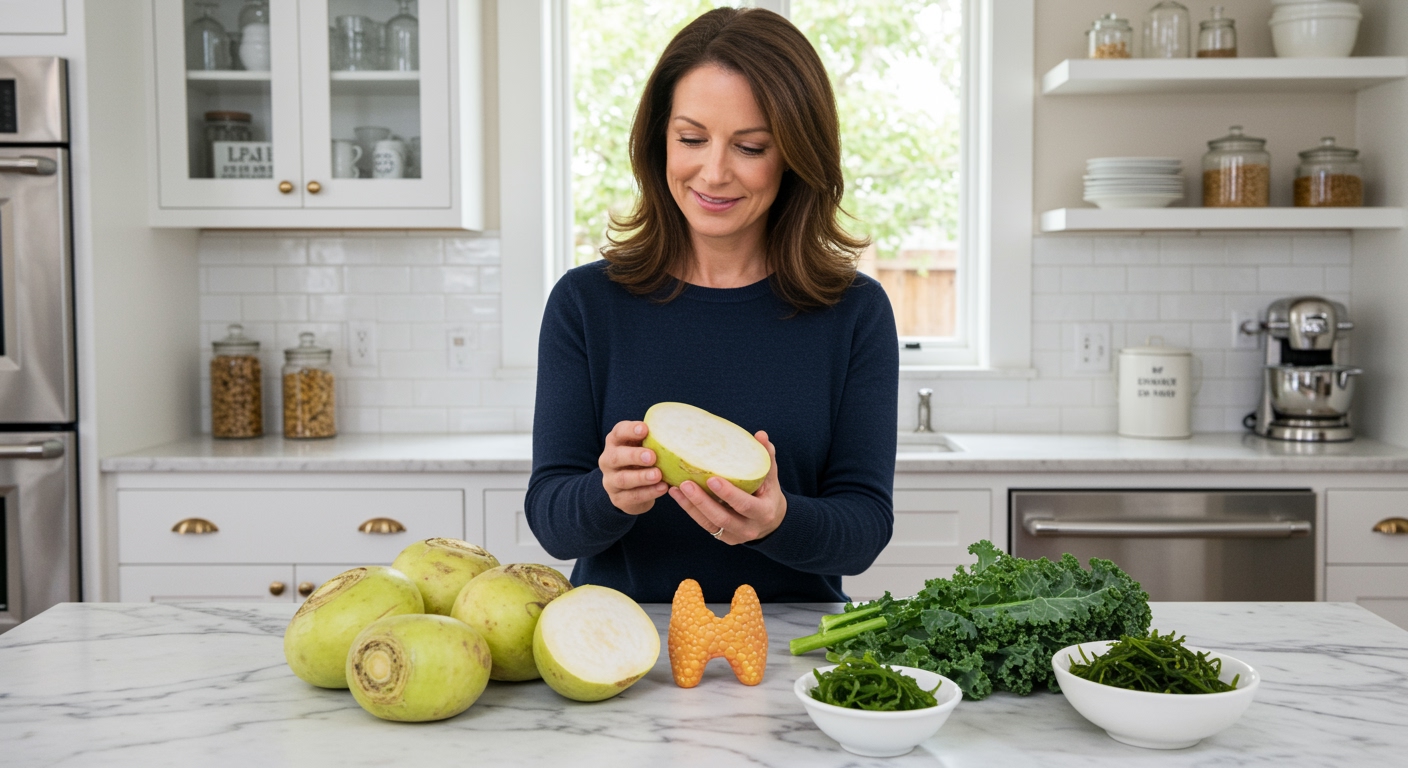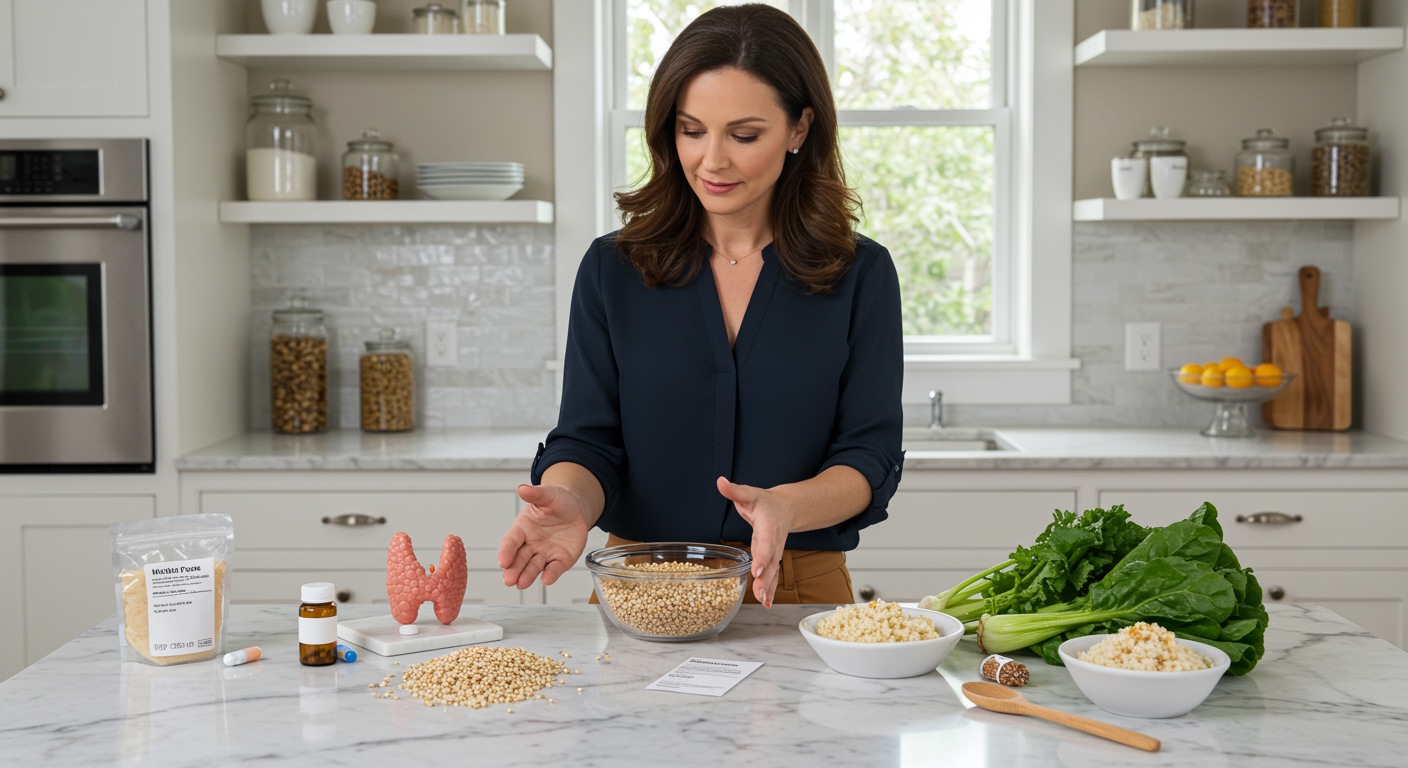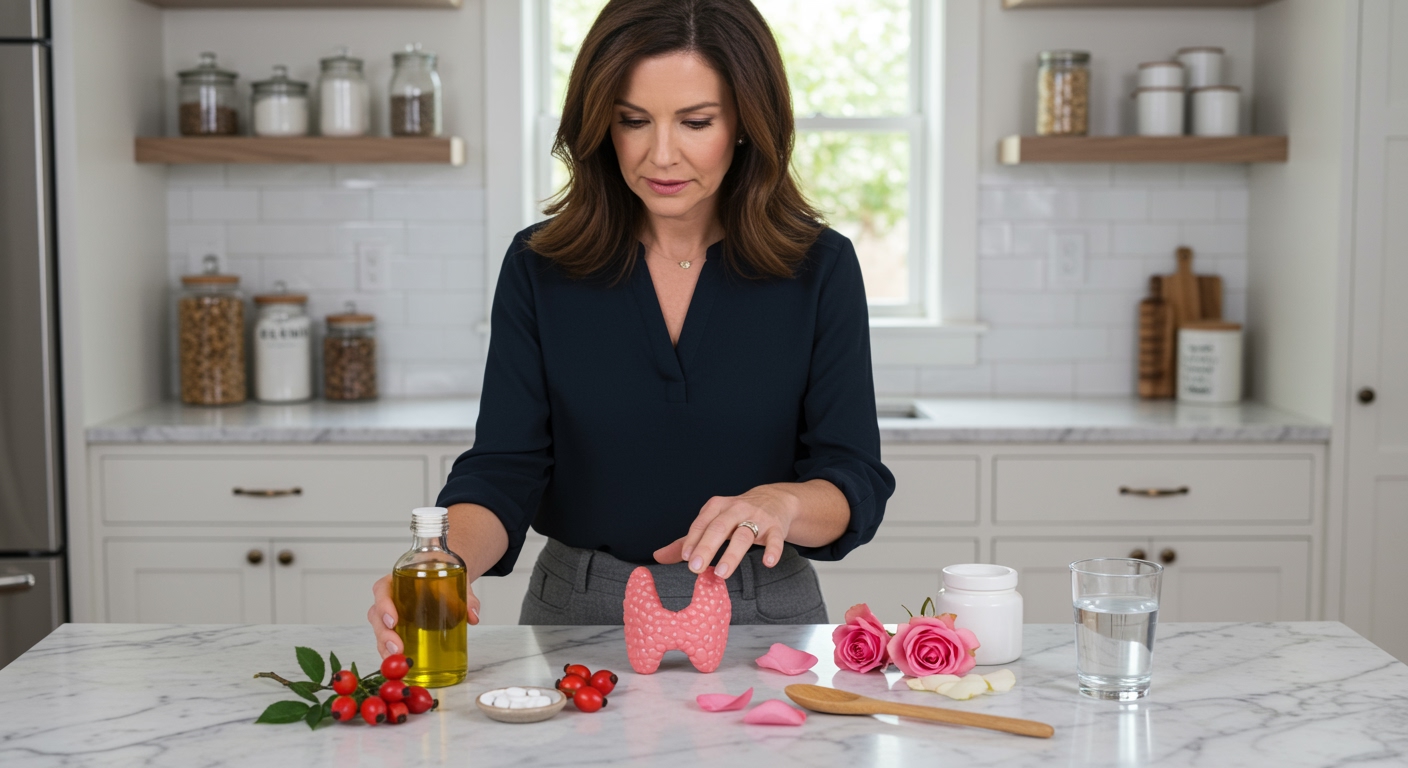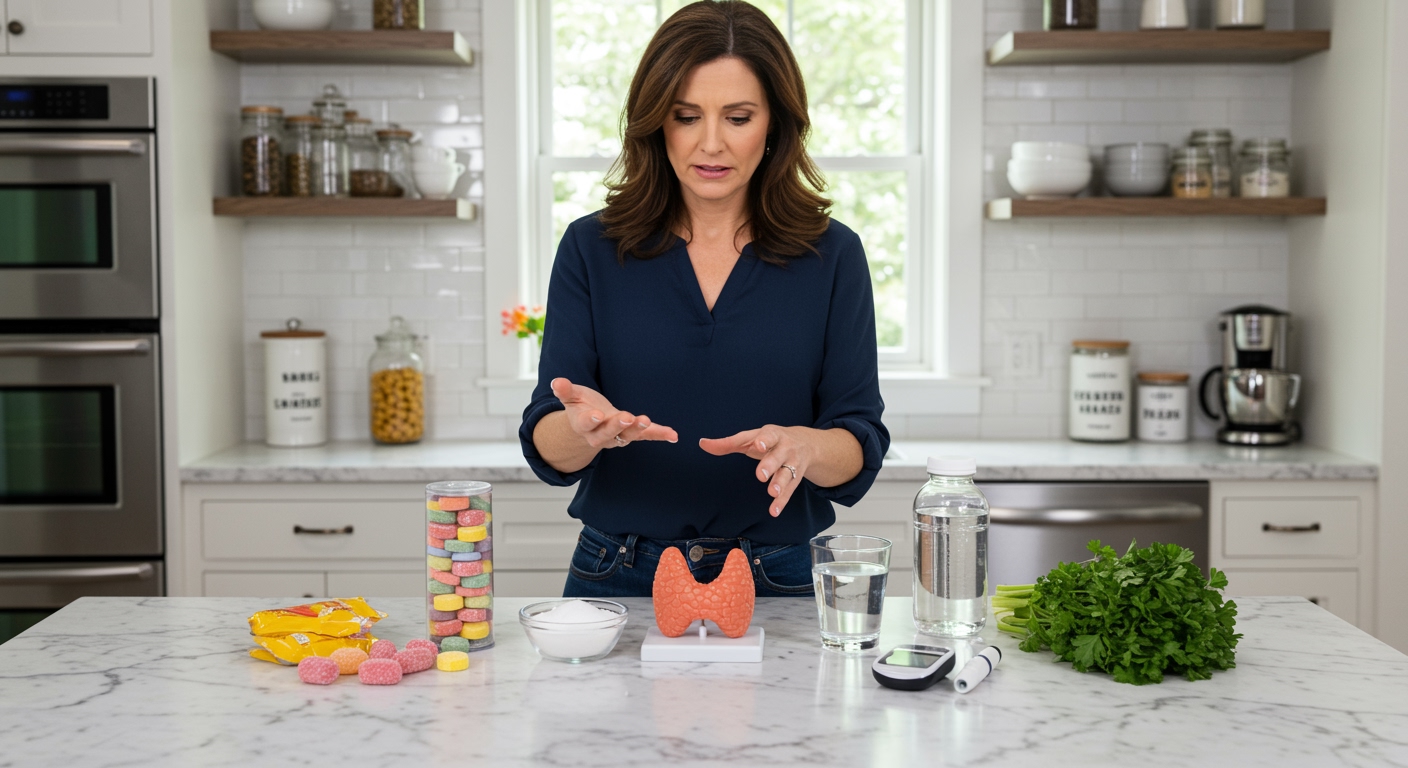✪ Key Takeaway: Rutabagas are safe for most people with hypothyroidism when cooked and consumed as part of a balanced diet with adequate iodine.
Introduction
You have probably heard that rutabagas and other cruciferous vegetables can harm your thyroid.
This concern comes from compounds called goitrogens that exist in these vegetables, and people with hypothyroidism often wonder if they should avoid rutabagas completely.
Hi, I am Abdur, your nutrition coach, and today I am going to explain the real relationship between rutabagas and hypothyroidism so you can make informed decisions about your diet.
What Makes Rutabagas a Concern for Thyroid Health?
Rutabagas belong to the cruciferous vegetable family, which includes broccoli, cabbage, kale, and Brussels sprouts.
These vegetables contain natural compounds called goitrogens, which can interfere with thyroid hormone production when consumed in very large amounts.
Goitrogens work by blocking the thyroid gland from absorbing iodine, a mineral essential for making thyroid hormones.
When your thyroid cannot get enough iodine, it may enlarge to compensate, forming what doctors call a goiter.
This mechanism sounds alarming, but the actual risk depends on several important factors that most people overlook.
The concentration of goitrogens in rutabagas is relatively moderate compared to some other cruciferous vegetables.
Understanding this context helps you see why blanket restrictions on rutabagas are usually unnecessary for thyroid health.
✪ Fact: Cooking cruciferous vegetables like rutabagas significantly reduces their goitrogenic compounds by up to 90 percent.
Do You Need to Avoid Rutabagas If You Have Hypothyroidism?
The short answer is no, you do not need to avoid rutabagas if you have hypothyroidism.
Research shows that goitrogens from cruciferous vegetables only become problematic under specific conditions that rarely occur in real life.
First, you would need to consume extremely large amounts of raw cruciferous vegetables daily for an extended period.
Second, this risk increases significantly only when you also have iodine deficiency, which is uncommon in most developed countries.
Most people with hypothyroidism take thyroid hormone replacement medication, which bypasses the need for your thyroid to produce hormones naturally.
This means that even if goitrogens did interfere with your thyroid function, your medication would compensate for this effect.
The nutritional benefits of rutabagas far outweigh the theoretical risks for the vast majority of people with hypothyroidism.
✪ Pro Tip: Always cook your rutabagas by roasting, boiling, or steaming to minimize goitrogenic compounds while maximizing nutrient absorption.
What Nutritional Benefits Do Rutabagas Offer?
Rutabagas provide impressive nutritional value that supports overall health, including thyroid function.
One cup of cooked rutabaga contains only about 50 calories but delivers significant amounts of vitamin C, potassium, magnesium, and fiber.
Vitamin C acts as a powerful antioxidant that helps reduce inflammation, which is particularly important for people with autoimmune thyroid conditions like Hashimoto thyroiditis.
The fiber content in rutabagas supports digestive health and helps maintain stable blood sugar levels throughout the day.
People with hypothyroidism often struggle with constipation, and the fiber in rutabagas can help address this common symptom naturally.
Rutabagas also contain glucosinolates, compounds that have shown potential cancer-fighting properties in research studies.
These same compounds that create concern about thyroid function actually provide protective benefits against various diseases when consumed in normal dietary amounts.
✪ Note: Rutabagas provide more vitamin C per serving than oranges, making them excellent for immune support and collagen production.
How Much Rutabaga Is Safe to Eat With Hypothyroidism?
There is no specific limit on rutabaga consumption for people with hypothyroidism who maintain adequate iodine intake.
Most nutrition experts agree that eating moderate portions of cooked cruciferous vegetables several times per week poses no risk to thyroid health.
A reasonable serving size would be about one half to one cup of cooked rutabaga as part of a balanced meal.
The key is variety, so you should rotate rutabagas with other vegetables rather than eating them exclusively every single day.
If you consume rutabagas regularly, make sure you also get enough iodine-rich foods like fish, dairy products, eggs, or iodized salt in your diet.
People who follow strict vegan diets or avoid iodized salt should pay extra attention to their iodine intake when eating cruciferous vegetables frequently.
Your doctor can test your thyroid function with a simple blood test if you have concerns about how your diet affects your thyroid hormone levels.
✪ Pro Tip: Pair rutabagas with iodine-rich foods like fish or seaweed in the same meal to support optimal thyroid function.
Should You Worry About Raw Versus Cooked Rutabagas?
The preparation method makes a significant difference in how rutabagas affect your thyroid health.
Raw rutabagas contain higher levels of goitrogenic compounds compared to cooked versions, though most people find raw rutabaga too tough and bitter to eat anyway.
Cooking breaks down the enzyme myrosinase, which is responsible for converting glucosinolates into goitrogenic compounds in your digestive system.
Boiling appears to be the most effective cooking method for reducing goitrogens, though it also leaches some water-soluble nutrients into the cooking water.
Steaming and roasting offer a good compromise, preserving more nutrients while still deactivating most goitrogenic compounds.
If you enjoy raw vegetables in salads, you can safely include small amounts of raw rutabaga without concern, especially if you have adequate iodine intake.
The practical takeaway is that cooked rutabagas are the better choice for people with hypothyroidism who want to minimize any theoretical risk while maximizing nutritional benefits.
✪ Fact: Fermented cruciferous vegetables like sauerkraut made from rutabaga also have reduced goitrogenic activity compared to raw versions.
The Bottom Line
Rutabagas are safe and nutritious for most people with hypothyroidism when consumed in reasonable amounts as part of a balanced diet.
Fear of healthy foods creates more problems than the foods themselves ever could, and rutabagas deserve a place on your plate regardless of your thyroid status.
I would love to hear your thoughts and experiences with rutabagas and hypothyroidism, so please share your questions or feedback in the comment section below.
References
At NutritionCrown, we use quality and credible sources to ensure our content is accurate and trustworthy. Below are the sources referenced in writing this article:
- National Institute of Diabetes and Digestive and Kidney Diseases: Hypothyroidism (Underactive Thyroid)
- Linus Pauling Institute: Cruciferous Vegetables
- Mayo Clinic: Hypothyroidism Diet
- PubMed Central: Effect of Cooking on Goitrogenic Compounds





